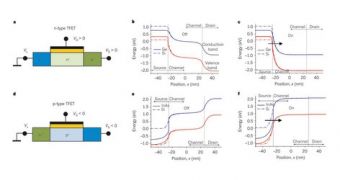Quantum tunneling might just become the basis for quantum computers, or at least the tunnel-FET technology will, as soon as current methods and hardware stops being so much more convenient because of familiarity.
Then again, the PC has come such a long way in less than half a century that it is more or less clear that technology is going to keep advancing quickly, provided no apocalyptic scenarios happen and make short work of that and everything else.
Doomsaying aside, though, quantum physics is just about ready to actually start playing a part of humanity's life.
Today's transistors, which are at the basis of all computers (the CPU alone has billions of them) utilize a technology called “field effect” under which voltage induces an electron channel that activates the transistor.
Field effect is approaching its limit, however, so the tunnel-FET technology could take over by 2017.
Tunnel-FET uses a phenomenon called “quantum tunneling” which is fundamentally different.
The transistor has two chambers separated by an energy barrier. On one side, electrons await for voltage to be applied, at which point they cross the barrier, activating the transistor.
Quantum theory says that some electrons cross the barrier even if they seem to lack the needed energy, which means that they can be 'encouraged' by reducing the barrier width.
As such, quantum chips could need much less actual outside energy to work compared to all the computing machinery of today, up to 100 times less actually.
Initial chips will start off combining field-effect and tunnel effect, though “when” is uncertain.
“By replacing the principle of the conventional field effect transistor by the tunnel effect, one can reduce the voltage of transistors from 1 volt to 0.2 volts,” explains Adrian Ionescu, an EPFL researcher..
“The current prototypes by IBM and the CEA-Leti have been developed in a pre-industrial setting. We can reasonably expect to see mass production by around 2017.”

 14 DAY TRIAL //
14 DAY TRIAL //